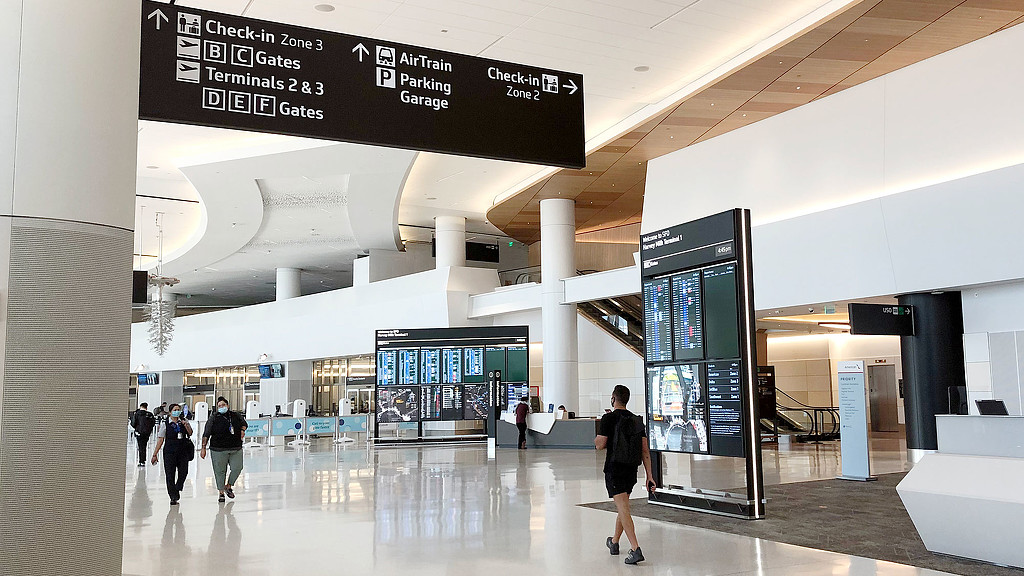Designing More Inclusive, Accessible Transit Systems for All
September 01, 2020 | By Gail Napell
Editor’s Note: This post is part of our ongoing exploration of how design is responding to the COVID-19 pandemic.
Access to transit is often challenging, especially for people with disabilities, and the COVID-19 pandemic has put a spotlight on this challenge. Now, more than ever, it’s vital for all people who rely on private and public transit to be able to navigate these systems in order to access essential services, such as groceries and medical care, or travel to places where they live or work. To create healthier, more inclusive cities, we must promote more equitable mobility services and make transit more accessible to all users.
While most transportation systems are designed for the “average” user, this inadvertently creates barriers for others, such as those with disabilities. Universal design makes transit facilities more functional for a wider range of people, recognizing that there’s no such thing as the “average” user, and creating an environment that has a collective benefit for all people who need to navigate these networks.
All people have the need at some time to use transportation systems. As the world’s population becomes more mobile and globalization increases, the need for standardization and accommodation within transit systems worldwide becomes evident. While some industries have made significant strides in implementing universal design, the transit industry needs universal design guidance critically and urgently.
Think about a time you travelled to a city or country where you were using the transportation system for the very first time. It is likely that your experience of the transit system made a lasting impression on how you felt about the overall experience of the place you were visiting. Was it simple and intuitive to understand how to pay? Flexible in its accommodation when travelling with luggage? Did it inspire confidence in your ability to independently navigate the environment? Or did you find that you couldn’t use a local public transit system because it didn’t accommodate baby’s stroller, or you couldn’t figure out the route map, or how to purchase tickets?
The Transit Universal Design Guidelines (TUDG) recognize the value in implementing Universal Design principles that support all user groups — from the first-time user to the daily user. These guidelines will make a positive impact by creating transit systems that are enjoyable, understandable, easy to use, and accessible to all.
The American Public Transportation Association (APTA) developed these guidelines to promote equitable mobility services and make transit more accessible for all users. These universal design best practices can be applied not just in the U.S., but to transit systems around the world.
The guidelines are especially important as universal design integration will:
- Increase the independence for a greater number of public users in the public transit system,
- Reduce the reliability on specialized transit providers, and,
- Establish flexibility and adaptability of the transit system over time to be capable of serving a population as it evolves.
The need for Universal Design principles does not start and stop at the station door. The TUDG can be used for private transit systems and urban public spaces. Considerations are included for the environment leading up to the transit system, and for those elements designed to support the transit system.
The additional value in this document is that the goals and concepts can be implemented in just about any project. Transit projects have many of the same elements as other design projects; they require effective use of space for congregation, appropriate circulation, and thoughtful consideration of wayfinding and graphic design strategies. They must accomplish this all while maintaining an acceptable level of health and safety for occupants. Anyone can use the goals in this document for the next design project by referring to the following:
1. Section 4: User Groups to consider who you are ultimately designing for. This section includes accommodations required to satisfy the needs of specific user groups — including individuals with visual, hearing, speech, or mobility disabilities and needs, among others.
2. Section 5: Aspects of Accommodation to identify features and techniques that can enhance the end user experience — from handrails, to hearing assistant systems, to tactile pathways, to mobile ticketing apps.
3. Section 6: Implementation to understand the process and approach for transit agencies for implementing universal design for transit through advocacy, engagement, and evaluating and finalizing design options. With this approach, transit agencies can attract new and retain existing ridership and provide solutions that are inclusive and universal from the start.
With changing demographics and improved healthcare, more of the population can benefit from universal design. We are pleased to have had a role in the development of the APTA Transit Universal Design Guidelines. Our hope is that these guidelines will ultimately help create more equitable, accessible transit systems and contribute to a more inclusive, healthier planet. Please contact us to learn more.
For media inquiries, email .
